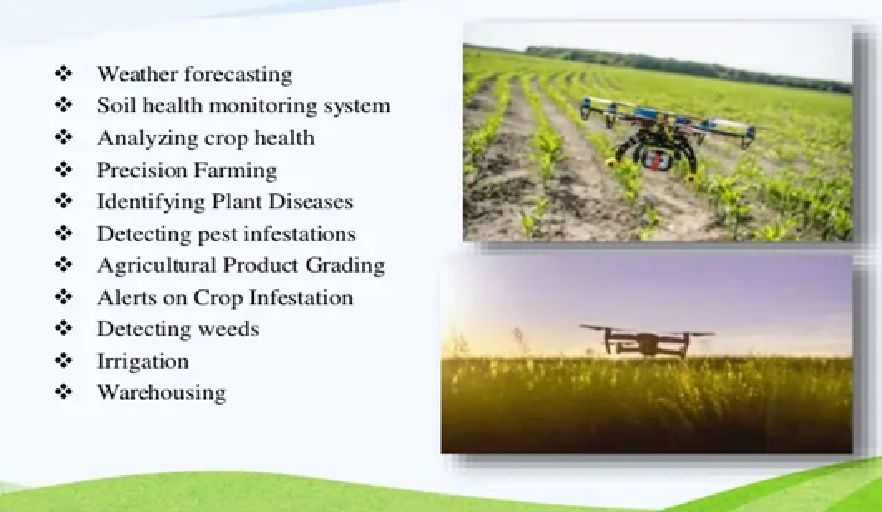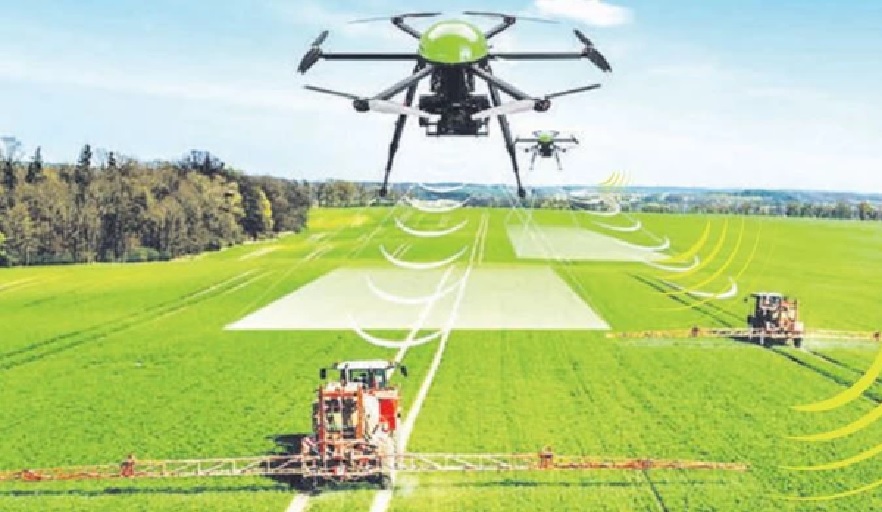The Role of AI in Agriculture
Agriculture involves a number of processes and stages, the lion’s share of which are manual. By complementing adopted technologies, AI can facilitate the most complex and routine tasks. It can gather and process big data on a digital platform, [1] come up with the best course of action, and even initiate that action when combined with other technology. The figure 1 shows the role of AI in agriculture.

Figure 1: The Role of AI in Agriculture
Artificial Intelligence-based agri-tech applications are set to unleash value in agriculture, especially in wake of the recent farm reforms that have opened doors to private sector investments in agriculture.
In the financial year 2019-20, Indian agri-food tech start-ups raised more than $1 billion through 133 deals. India’s exports of agricultural products rose to $37.4 billion in 2019 and with investments in supply chain and better storage and packaging, this is set to increase further. [2] All these steps will go a long way in ensuring remunerative prices for farmers and reduce agrarian stress.
Use of technology in agriculture will improve farmers’ access to markets, inputs, data, advisory, credit and insurance. Timely and accurate data coupled with analytics can help build a robust demand-driven efficient supply chain. With the use of sensors, photographs through phones, IoT devices, drones and satellite images, agricultural data can be collected and matched with weather data, soil health card data, mandi prices and help build predictive models that can greatly enhance decisions about seeds, fertilisers, pesticides that are of critical importance in both pre-harvest and post-harvest stages. Most of these AI models are low-cost and affordable and can add a lot of value to the agriculture ecosystem.
Agricultural development will benefit not just farmers, but also a huge portion of the rural poor who are actively involved in agriculture or indirectly tied to agriculture as consumers. A more conjugative environment in the country for the development of the economy as a whole and better agricultural income would be created by more efficient production methods, stabilized pricing, and higher agricultural income.
AI can help achieve this vision by contributing to [3] critical areas like:
- Crop Selection, where AI-based solutions are ideal for selecting crops based on parameters like soil type, monsoon dates, availability and affordability.
- Crop Monitoring, where data can be collected using technologies like IoT, drones, and satellite imaging, from the fields, and then monitored and analysed by AI-based applications to identify the right solutions.
Major priorities and issues for Indian Agriculture [4]
- Small and fragmented land-holdings
- Shortage of good quality seeds, manures, fertilizers and biocides for poor peasants.
- Problem of Irrigation and heavy dependence on monsoon
- Lack of mechanization
- Soil Erosion
- Absence of proper agricultural marketing facilities
References:
- https://intellias.com/artificial-intelligence-in-agriculture/
- https://indianexpress.com/article/opinion/columns/artificial-intelligence-farmer-agriculture-7069520/
- https://analyticsindiamag.com/top-ai-powered-projects-in-indian-agriculture-sector-2019/
- https://www.dqindia.com/role-ai-transforming-indias-agriculture/
Cite this article:
Vinotha D (2021) The Artificial Intelligence (AI) in Agriculture, AnaTechmaz, pp 2





